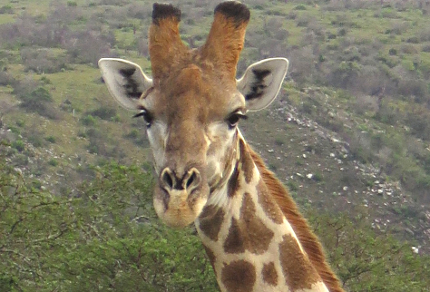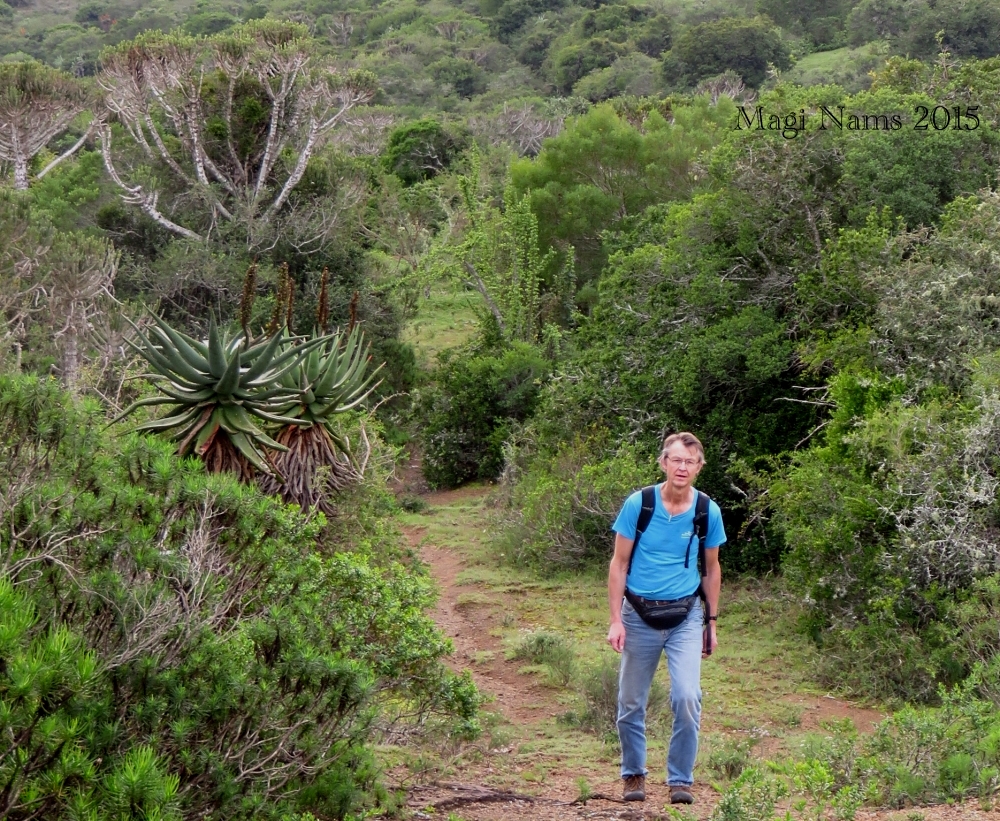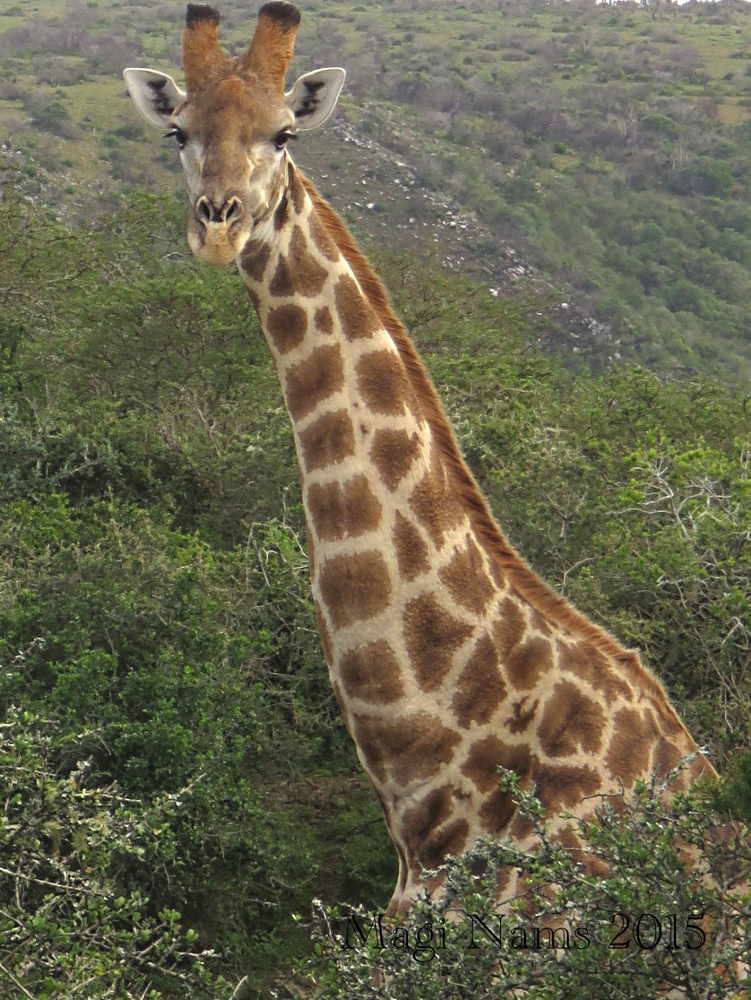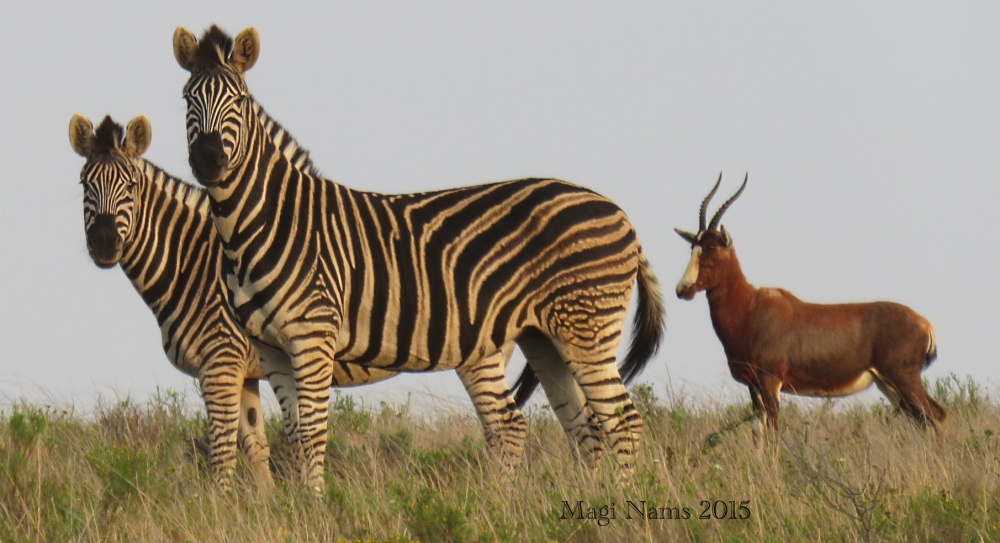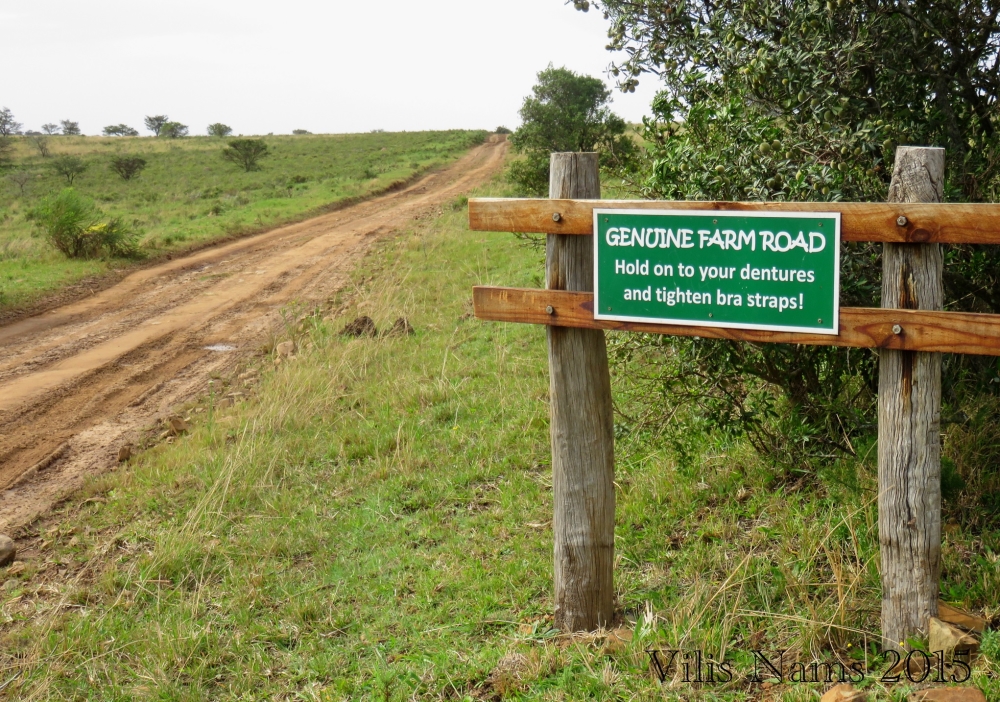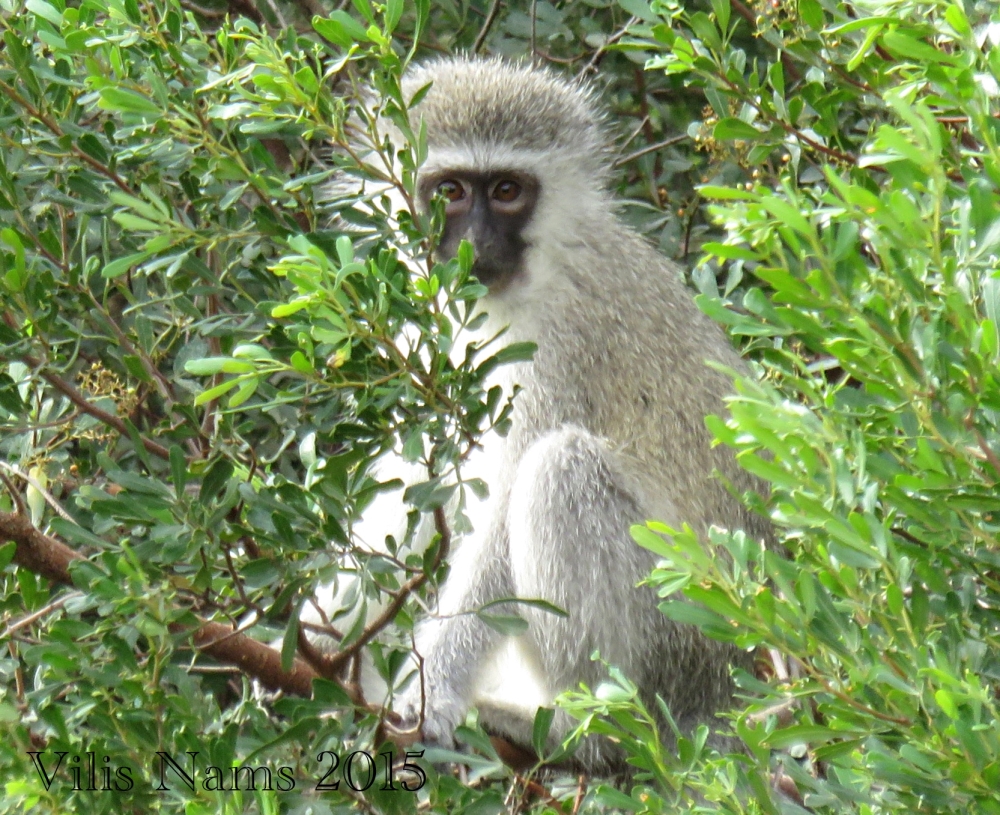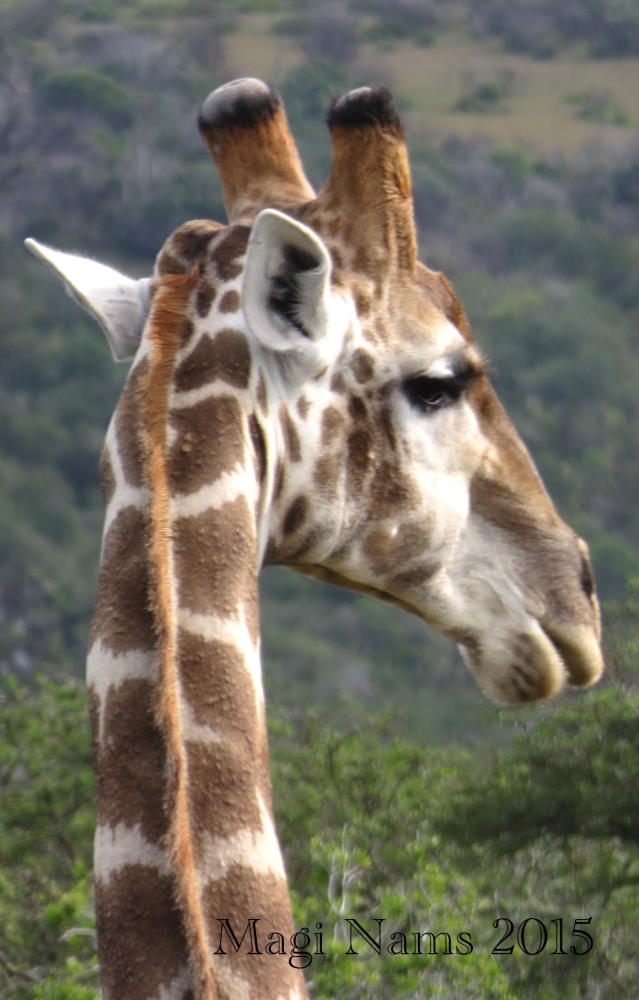While hiking at Assegaai Trails, we walked among giraffes, zebras and a rich diversity of birds in a reserve without dangerous big carnivores, buffalo or elephants. An amazing experience!
A balmy 19° C greeted Vilis and me in Grahamstown on Saturday morning, July 11. This was an unusually warm temperature in the midst of the Eastern Cape winter, during which the average July overnight low for Grahamstown is 5.6° C. At 8 a.m., we headed south on the N2 for a day of hiking at Assegaai Trails, about 20 kilometres from Grahamstown.
Outside the city, dry, grassy hills with a blush of green shrubs thrust into the sky. Open-limbed gum trees and pines lined sections of road. Slanted rock strata protruded through the grass on rocky hillsides. We turned onto R343 and drove through shrubland growing on sandy and rocky soil, en route to Salem and the turnoff for Assegaai Trails. We passed several nature reserves and lodges before reaching Salem – a scattering of homes, church and country club tucked into the bush surrounding a three-way stop.
We turned onto a gravel road and followed it through grassland and shrubland. Beef cattle grazed in a pasture alongside the road. Simple, slanted-roof cement houses stood in small clearings. Vilis commented, “It looks like the townships back in the bush.” People walked the roadside, alone, in couples or as families. One woman carried a load balanced on her head.
Our next turnoff led us onto a rough South African dirt road pitted with potholes, yet the long views of distant hills and a valley were worth the jouncing. We passed black-faced sheep grazing in pastures and pale red termite mounds bulging up from the ground surface, some a metre across and a metre or more high. White-necked ravens winged over the land. A Cape longclaw, with a brilliant orange throat, perched on a shrub, its feathers buffeted by a strong wind. A rock kestrel, all shades of rust and grey with black spots on its back, stood on the wooden crossbar atop a power pole, facing into the wind.
We checked in with Ray and Sheila at the Assegaai Trails reception, then headed off on a three-hour hike. Yellow Trail led us among thorn trees, aloes and cacti and up and down rises to Farmerfield Lookout over Willow Pool. A long, narrow widening of a creek, the pool was edged with succulents, small-leaved shrubs and Karoo Boerdoon, a tree with finely divided leaves, labelled to indicate its identity. Another label pointed out bushman’s poison, an innocuous-looking shrub that’s highly toxic. Vilis later read that eating meat cooked over logs of bushman’s poison could prove fatal. Mammal tracks and scat were everywhere, and we figured that dinner-plate-sized, cloven-hoof tracks had to have been made by giraffes. Giraffes aren’t native to the Grahamstown area but are stocked by many game and nature reserves.
Within minutes, we caught sight of long, spotted necks above the vegetation in the distance. The half-dozen giraffes, including two young, stared at us and then broke into a lumbering run, their long-necked, long-legged bodies swaying and somehow managing to look stately and clumsy at the same time. Gorgeous!
White butterflies flitted among the thorn trees. A half-dozen impala rams with lyre-shaped horns grazed on a green hillside. A piggish grunt issued from a thorny thicket beside us. We found fresh rootings and concluded the ‘pig’ was likely a warthog.
Crowned lapwings with black-and-white-striped heads flushed from long grasses, screeching their “kree-ek, kree-ek” calls. A small herd of zebras and two blesboks raced away when they caught sight of us. The wildlife at Assegaai Trails was warier than the big animals we saw in the southern section of Addo Elephant National Park two weeks ago; however, Assegaai doesn’t have big carnivores, buffalo or elephants so we could leave our vehicle and walk among the animals, which was an amazing experience.
By noon, the strong, warm wind had become a wild thing, blasting us as we walked a dirt road through the reserve and stealing our hats several times. Out in his pickup, Ray spotted us and offered us a ride back. We climbed into the pickup’s box and sat on wheel wells coated with red dust. “Just like back on the farm!” Vilis said.
After a quick lunch in our rented cottage, we drove through the reserve, pausing often to exit the car and have a look or go for a walk. At Everest Lookout, we parked the car and hiked the rim of Glenfield Cliffs, an amphitheatre of pinkish brown granite 100 metres high, with the curving Assegaai River at its base.
We saw cacti close-up and more antelope – a large herd of impalas, three waterbucks and two bonteboks – far in the distance, on a different reserve. We scored sightings of warthogs on the return drive and watched the African sunset spill its gold-pink light onto zebras.
Evening thunderstorms, no doubt stirred up by the abnormal heat and fierce wind, dumped hard rain onto the cottage roof and brought cooler air.
On Sunday morning, we again set out hiking at Assegaai Trails, this time over slippery red clay soil and grassland savanna. We again spotted the small herd of giraffes, as well as two blesboks that raced off on a morning run before returning to the giraffes. A large herd of impalas, both rams and ewes, grazed near the giraffes. Two black-throated barbets flew to perches on thorn trees, the birds’ red heads like hot embers in the morning sunlight.
Later, we drove a short stretch of the reserve road – wet and greasy after the previous evening’s downpours – and then headed for Grahamstown. We spotted springboks resting on a green hillside and vervet monkeys running on the ground and climbing in trees at two different spots along the way – the perfect ending to a relaxed and wonderful weekend of hiking at Assegaai Trails.
My bird sightings: white-necked raven, *South African sacred ibis, Cape crow, rock kestrel, Cape longclaw, greater double-collared sunbird, *pale-winged starling, speckled mousebirds, crowned lapwing, fork-tailed drongo, Cape glossy starling, black-headed oriole, *southern black flycatcher, Hadeda ibis, African hoopoe, African olive-pigeon, black-headed heron, *African darter, Cape weaver, red-winged starling, southern boubou, *emerald-spotted wood-dove, *black-collared barbet, dark-capped bulbul, common fiscal, *jackal buzzard, *brown-hooded kingfisher.
My mammal sightings: +giraffe, zebra, +impala, *blesbok, +waterbuck, +bontebok, bushbuck, warthog, *springbok, vervet monkey. (+not native to area)

